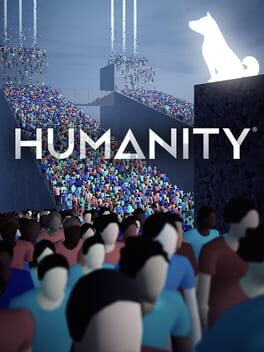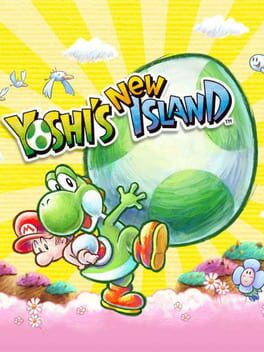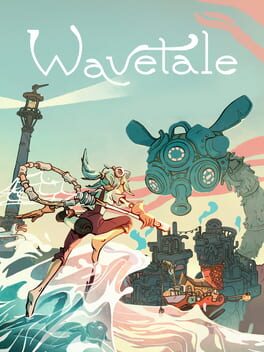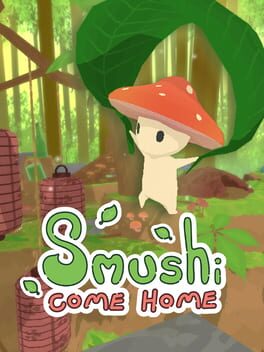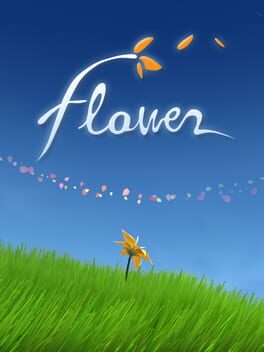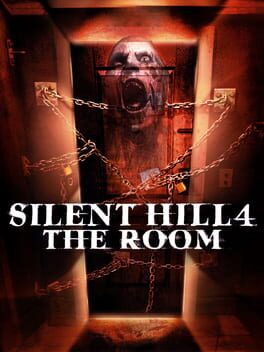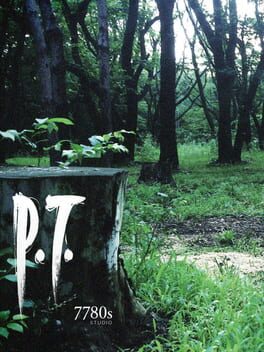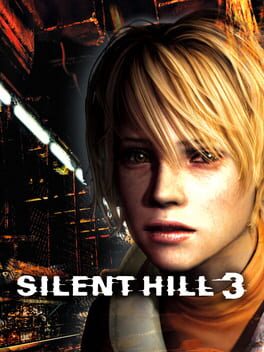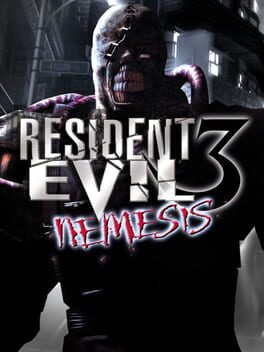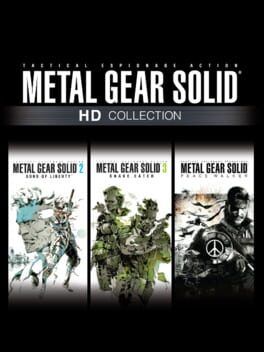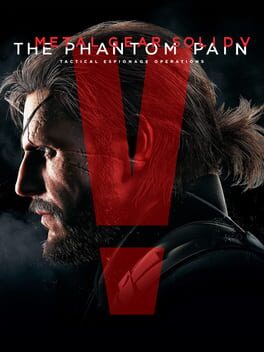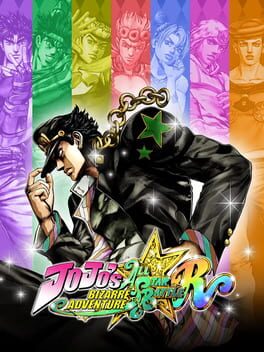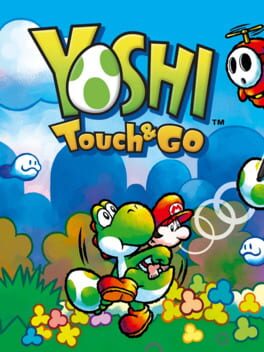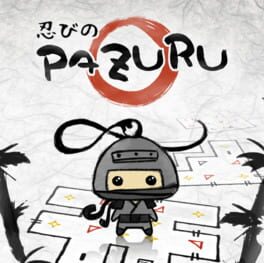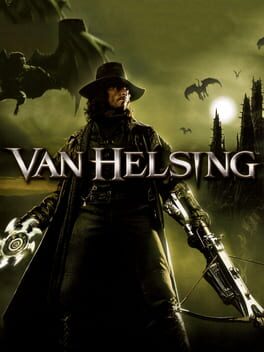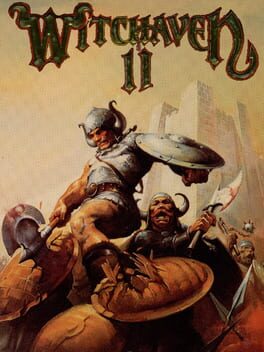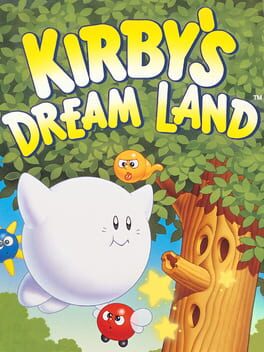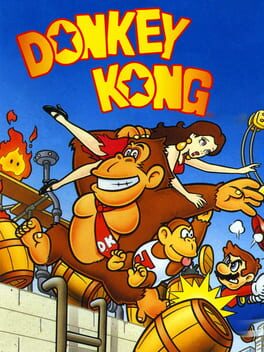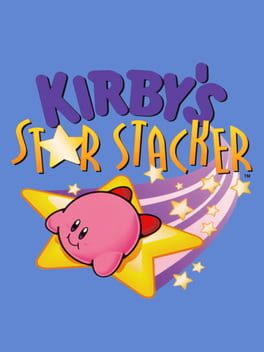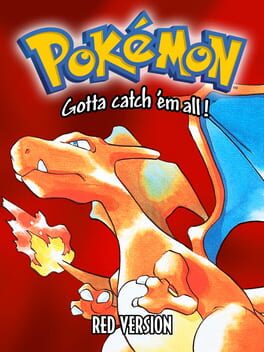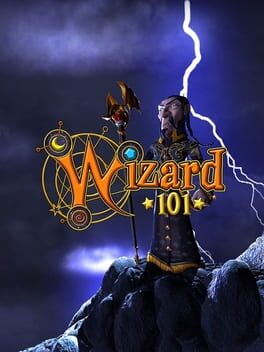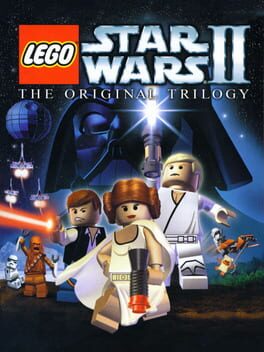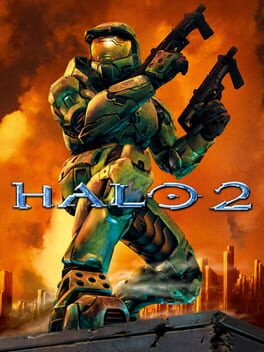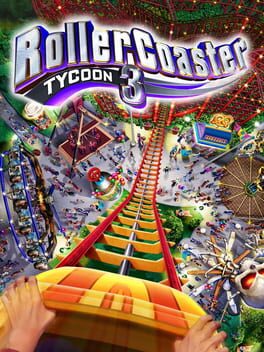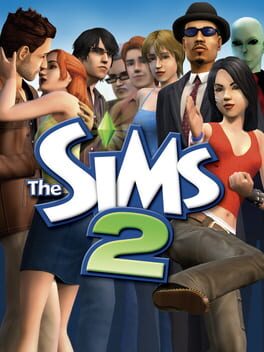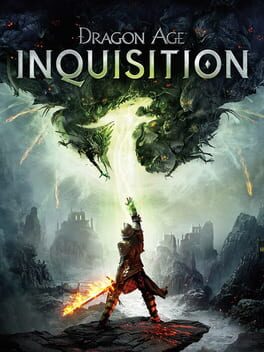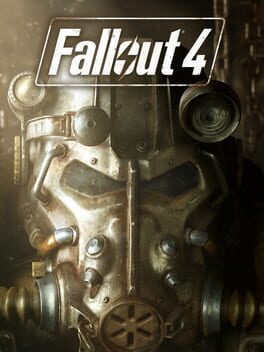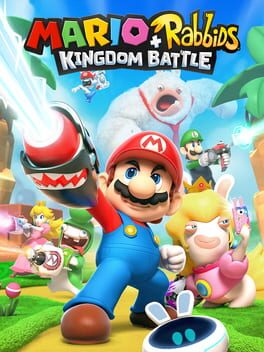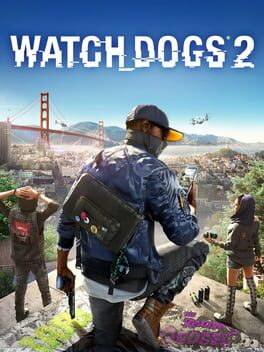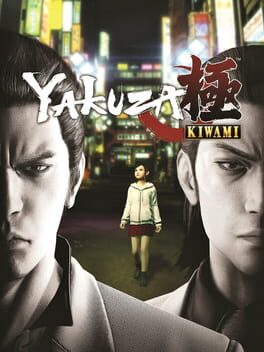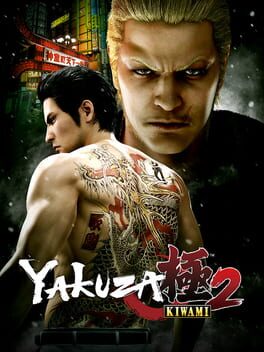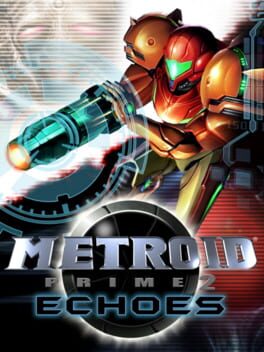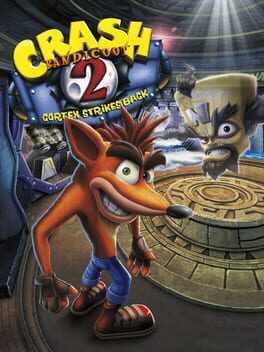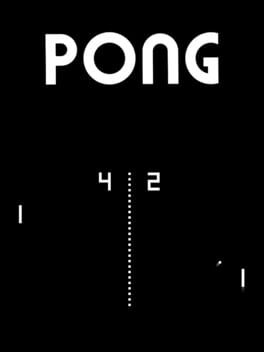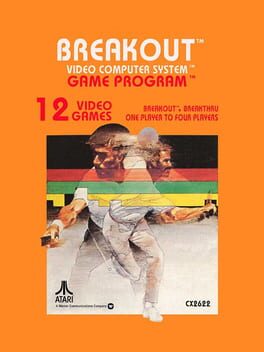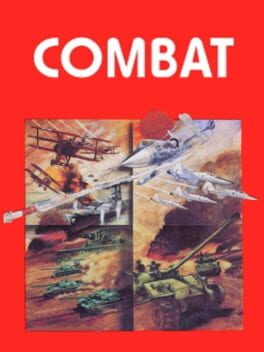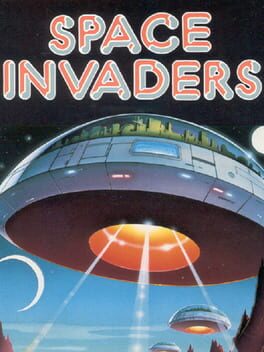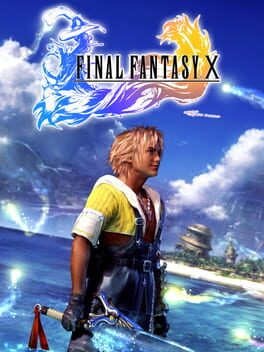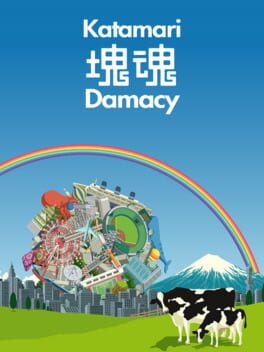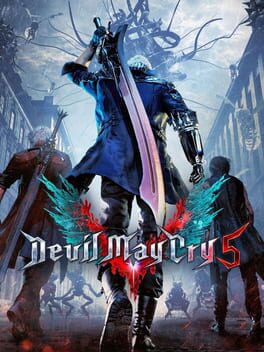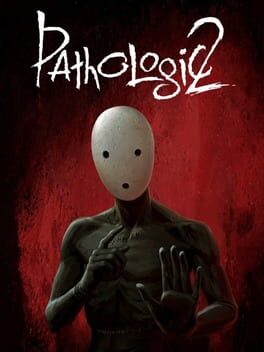310 reviews liked by Naught
Resident Evil 4
2023
Humanity
2023
This game is a difficult ask for $30, if you are subscribed to a PS Plus Extra feel free to try it out. It starts out amazing, but later mechanics can be very frustrating and too trial-and-error. The game is lacking a lot of QoL features, and the soundtrack is super hit or miss too.
Mechanics
The big advertised aspects that made me try the game, leading infinite streams of people through fun puzzle platforming challenges in real-time, get sidelined in later chapters, and I didn't find a lot of the new stuff as enjoyable. There's far less platforming, which was my favorite aspect of the game.
The game starts out with puzzles, but later on, it often turns into trial-and-error when combat starts to be involved. Sometimes, enemy movements even happen during the middle of the stage, and there's not enough warning when it happens. Other times, it feels like RNG whether or not you win a combat, and some missions are extremely unforgiving, making you fail the level or lose access to Goldies if you lose even one human.
In many levels, time is stopped while you place commands, then you start time and see if it works out. These stages become more tedious than hard when enemies are involved. Instead of discovering the solution to a tricky puzzle, you're retrying over and over, adjusting your commands tile by tile until you find the exact setting that either avoids or defeats the enemy, and then reaches the exit.
In some time stop stages, you can position some humans before starting time. However, these starting positions of humans are not saved, so you have to re-do them each time you retry.
Goldies
Goldies start out as bonus humans that you have to safely guide to the exit without letting them fall. This mechanic starts out super fun, and you're often sending something so valuable flying through the sky and hoping they make it. Some of them are very challenging to collect and bring to the exit, especially in real-time, and it was great fun in early chapters.
But later on, Goldies become required to unlock the exit to complete many stages, defeating the purpose. It's not bonus anymore. Some required story stages only have 1 Goldy, and you must get it to clear the stage.
Some later stages have extremely trivial Goldies, directly on your path or right next to it. I've even found one that was placed a couple tiles in front of the exit. It was just... free.
Other Problems
You can see how the enemy humans will move. They have arrows and stuff just like the ones you place, but in black. However, you cannot see these arrows unless time is moving. You need to start time, and then you must enter free camera mode. Otherwise, you can't see the enemy arrows. I went through the entire game not realizing that this information was available because of this issue.
During time stop stages, the start button is a physical location you have to run to. When you retry, you get teleported back to the starting position and then have to walk back to where your error was, fix your error... and then walk back to the start button. This should've been streamlined somehow.
Soundtrack is very hit or miss, and the music selector is bugged; when you retry a stage, the music resets back to default.
Some combat or physics RNG can cause you to randomly win or fail a stage without changing anything. If a Goldy enters an intersection between two streams of humans, it might get diverted into the other path. It might not. It's random which way it goes, and I've had to restart stages until I get the desired outcome.
HUMANITY is not a bad game, but it's just very rough around the edges.
Mechanics
The big advertised aspects that made me try the game, leading infinite streams of people through fun puzzle platforming challenges in real-time, get sidelined in later chapters, and I didn't find a lot of the new stuff as enjoyable. There's far less platforming, which was my favorite aspect of the game.
The game starts out with puzzles, but later on, it often turns into trial-and-error when combat starts to be involved. Sometimes, enemy movements even happen during the middle of the stage, and there's not enough warning when it happens. Other times, it feels like RNG whether or not you win a combat, and some missions are extremely unforgiving, making you fail the level or lose access to Goldies if you lose even one human.
In many levels, time is stopped while you place commands, then you start time and see if it works out. These stages become more tedious than hard when enemies are involved. Instead of discovering the solution to a tricky puzzle, you're retrying over and over, adjusting your commands tile by tile until you find the exact setting that either avoids or defeats the enemy, and then reaches the exit.
In some time stop stages, you can position some humans before starting time. However, these starting positions of humans are not saved, so you have to re-do them each time you retry.
Goldies
Goldies start out as bonus humans that you have to safely guide to the exit without letting them fall. This mechanic starts out super fun, and you're often sending something so valuable flying through the sky and hoping they make it. Some of them are very challenging to collect and bring to the exit, especially in real-time, and it was great fun in early chapters.
But later on, Goldies become required to unlock the exit to complete many stages, defeating the purpose. It's not bonus anymore. Some required story stages only have 1 Goldy, and you must get it to clear the stage.
Some later stages have extremely trivial Goldies, directly on your path or right next to it. I've even found one that was placed a couple tiles in front of the exit. It was just... free.
Other Problems
You can see how the enemy humans will move. They have arrows and stuff just like the ones you place, but in black. However, you cannot see these arrows unless time is moving. You need to start time, and then you must enter free camera mode. Otherwise, you can't see the enemy arrows. I went through the entire game not realizing that this information was available because of this issue.
During time stop stages, the start button is a physical location you have to run to. When you retry, you get teleported back to the starting position and then have to walk back to where your error was, fix your error... and then walk back to the start button. This should've been streamlined somehow.
Soundtrack is very hit or miss, and the music selector is bugged; when you retry a stage, the music resets back to default.
Some combat or physics RNG can cause you to randomly win or fail a stage without changing anything. If a Goldy enters an intersection between two streams of humans, it might get diverted into the other path. It might not. It's random which way it goes, and I've had to restart stages until I get the desired outcome.
HUMANITY is not a bad game, but it's just very rough around the edges.
Sonic Adventure
1998
I was born too late for the SEGA Dreamcast, but I was born just in time for the Nintendo GameCube, and one of my favorite games growing up was Sonic Adventure DX: Director’s Cut. I loved this game immensely growing up, and I played and replayed it over and over again, to the point where the disc wore out and stopped working. As the years went by, and I got older and came to play a wider variety of games, I eventually stopped enjoying Sonic games as much as I used to when I was little, to the point where nowadays I view the franchise with nostalgic indifference. It’s something that I definitely used to love and I might check in on occasionally, but it rarely occupies a space in my brain these days. Recently, those feelings of nostalgia took hold of me when I learned about how the DX version of Sonic Adventure was apparently a lot worse in comparison to the original. I read that it introduced new bugs and glitches, and it changed the game’s overall visual style for the worse. So, out of curiosity, and because I wanted to be reminded of old times, I decided to emulate the original Sonic Adventure to see how much better it actually was in comparison to the allegedly maligned DX version, and in all honesty, I don’t really think that DX is as much of a downgrade as I was led to believe. The game itself wasn’t as much of a fun nostalgia ride as I’d hoped it’d be, either.
Dr. Eggman has returned with a new plan for world domination, and this time he’s in command of a creature known as Chaos, a liquid monster who grows more powerful and changes shape after being fed the legendary Chaos Emeralds. Sonic and company all get involved with Eggman’s plot in some fashion, as they attempt to stop him from feeding Chaos all seven emeralds and wrecking untold havoc upon the world. You play as Sonic and five other characters, each with their own style of gameplay and personal narratives that occasionally crossover with one another.
I have to admit, reviewing this game is rather difficult for me. I played DX growing up so much that I know the game like the back of my hand. I’m used to the physics, I’m used to the boss fights, I know where I’m supposed to go and when, I can quote so many voice lines… basically I can play this game almost without thinking. There may be aspects of the game that I find easy that other people might struggle with. Sonic Adventure is a bit of a finicky game, and getting acclimated to how the game feels and controls may not come as naturally to others as it comes to me. Once you get used to it though, the whole game is very much a walk in the park. Each character shares the same core controls, but they also have their own abilities which make them unique.
Sonic’s campaign is by far the most fun in the game, and clearly where the most attention was given. His stages simply take the speed focused platforming approach of the 2D games and apply it to levels made in 3D. Sonic’s stages are often long and made up of multiple sections with a variety of different environments and music tracks for each section. Sonic for the most part feels pretty good to control, especially when you manage to get him going at higher speeds. The biggest problem that I have both with Sonic’s stages and with the game in general is easily the awful camera. The camera often acts like it has a mind of its own, and when Sonic or other characters go at high speeds, it often can’t keep up with them, or it’ll get stuck on level geometry, freak out, and prevent you from seeing where you’re going. The only times I ever died during my replay of this game was when these camera issues happened, and they happen most frequently when you’re going at high speeds through tunnels like in Sky Chase or Speed Highway. Sometimes to get the camera under control, you just gotta slow down and give it a second to catch up, which can be annoying, but it’s not the worst.
As mentioned, the rest of the cast all have their unique styles of gameplay, but for the most part, they all reuse various sections of Sonic’s stages. Some characters have sections of stages unique to them, and there is one stage (Hot Shelter) that Sonic doesn’t have that other characters do, but 95% of the other characters’ stages are reused or slightly edited sections of Sonic’s stages, and their gameplay for the most part isn’t different or interesting enough to really feel substantial. Playing as the other characters can feel rather repetitive and boring as a result.
Tails is easily the best example of this. His stages involve racing an AI-controlled Sonic through chopped up sections of Sonic’s stages. Tails can’t run as fast as Sonic, but he can fly, and there are these booster rings he can fly through that allow him to take shortcuts that Sonic can’t utilize himself. It’s never a challenge to outpace Sonic, and Sonic can sometimes get stuck on level geometry and not even advance forward at all until he rubber bands and teleports right next to you in order to catch up.
Knuckles’ stages have him searching for broken pieces of the Master Emerald. His ability to glide and climb walls allows him to explore stages in a way Sonic can’t, making the stages themselves a lot more open and exploration focused. His gameplay is different enough from Sonic’s that replaying stages isn’t really that big of a deal. His stages are my next favorite after Sonic’s.
Amy’s campaign is surprisingly fun. Amy has to flee from an invincible robot called Zero, which chases her across all of her stages. Amy’s on the slower side, but she has her own special movement abilities and attacks she can perform with her Piko Piko Hammer to make up for it. She also has the most unique content compared to the other playable characters that aren’t Sonic, as she has sections of Sonic’s stages that he doesn’t get to experience himself, such as the fun house in Twinkle Park. My only complaint is that she has the least amount of stages in the game (three in total).
Then there’s Big’s campaign… Big has always been rather infamous when it comes to discussions surrounding this game. As opposed to every other character’s gameplay, which is generally focused on exciting action, or high speed setpieces, Big the Cat’s gameplay involves fishing for his pet frog named Froggy. There are pools of water in stages that are occupied by Froggy as well as other fish, and you have to catch Froggy in order to clear Big’s stages. I think it’s pretty understandable why people don’t care for Big’s campaign. His gameplay is so different from everyone else’s, and if you want to complete the story, you have no choice but to do them. The fishing itself isn’t especially fun either, and it can be confusing because the game itself doesn’t really explain how fishing works. I remember being so frustrated and angry with Big’s levels as a kid because I didn’t know what I was supposed to do, and didn’t realize that you needed to flick the control stick down whenever Froggy bites onto the lure in order to actually hook him onto it so that you can start reeling him in. To the game’s credit, fishing is explained in the game’s instruction booklet (both this version and DX’s), so it’s a bit hard to blame it for not telling you what you’re supposed to do. That doesn’t change the fact that the fishing itself is still not particularly engaging. At the very least, it’s not difficult at all once you figure out how it works.
Finally, there’s E-102 Gamma’s campaign. Gamma is a robot built to serve Dr. Eggman. His stages involve running and gunning, blasting enemies and obstacles and defeating a boss at the end of each stage. I don’t really know how else to describe Gamma’s stages other than braindead. That might sound a bit harsh, but I genuinely can’t think of any other way to put it. You hold down the action button to target obstacles, wait to target as many as you can, and then Gamma will fire auto-homing shots to destroy targets. It’s also hilariously easy to just stun lock all of the bosses at the end of Gamma’s stages and keep them from fighting back at all.
The story, much like the gameplay, is ambitious, and I do actually think it’s executed well enough. However, the horrible dialogue and the stilted 90’s voice acting can really knock the wind out of its sails. It’s charming enough to find it funny, but very much in a “so bad it’s good” kinda way. Eggman’s voice actor is an exception though. Deem Reginald Bristow actually kills it with his performance. It’s really lively compared to every other character in the game, and he sounds like he’s honestly having a lot of fun with the role, as opposed to everyone else, who just sounds like they’re phoning it in.
By far the best part about this game is its soundtrack. God, to this day nothing really hits me like this game’s soundtrack. It’s honestly pretty damn close to perfect. Each track just adds so much to the immersion of each stage, while also being immensely groovy or electrifying songs on their own. Some of my favorite tracks include Run Through the Speed Highway, Red Hot Skull, and Pleasure Castle, but in all honesty, pretty much every single song is a banger, and aside from maybe some of the vocal tracks, it’s really difficult to find a song that isn’t great in this game.
As for how this compares to the DX version, I think that visually, environments look a lot more appealing in comparison. The textures in the Dreamcast version are a lot more colorful, and places like the Mystic Ruins look far more lush and appealing. Other than that though, I’ll be honest: I don’t think that this version has much else that makes it worth playing over DX. For the sake of making a good faith comparison, I did play through a chunk of Sonic’s levels really quickly in DX to see if I could run into any obvious bugs or glitches, but I didn’t encounter anything, and I don’t ever recall running into any particularly notable glitches in the DX version during the several playthroughs of it when I was a kid. If anything, I feel like I still prefer DX a bit more because it has a free camera option you can turn on during stages, which is a huge blessing since the auto camera is so terrible. You can also skip cutscenes in DX which is super convenient. I feel like the glitches and bugs of DX are overblown, it seems like you really gotta go out of your way to experience them. You could argue that since I didn’t play DX from beginning to end that I’m not making a fair comparison, and y’know what, I won’t argue with you. I just really don’t have it in me to play this game from front to back a second time.
It’s clear that there was a lot of passion and ambition that went into Sonic Adventure and I have nothing but respect for that. I feel like this is one of the most experimental games I’ve ever played, especially for its time. It’s just that not all of its ideas pan out very well, and it causes the game to feel bloated and boring at times. Sonic Adventure, no matter which version I play, is always going to be a big source of nostalgia for me, and I’ll definitely treasure those memories I had of playing the game as a kid. But it’s impossible to deny how rough and flawed the game truly is.
Dr. Eggman has returned with a new plan for world domination, and this time he’s in command of a creature known as Chaos, a liquid monster who grows more powerful and changes shape after being fed the legendary Chaos Emeralds. Sonic and company all get involved with Eggman’s plot in some fashion, as they attempt to stop him from feeding Chaos all seven emeralds and wrecking untold havoc upon the world. You play as Sonic and five other characters, each with their own style of gameplay and personal narratives that occasionally crossover with one another.
I have to admit, reviewing this game is rather difficult for me. I played DX growing up so much that I know the game like the back of my hand. I’m used to the physics, I’m used to the boss fights, I know where I’m supposed to go and when, I can quote so many voice lines… basically I can play this game almost without thinking. There may be aspects of the game that I find easy that other people might struggle with. Sonic Adventure is a bit of a finicky game, and getting acclimated to how the game feels and controls may not come as naturally to others as it comes to me. Once you get used to it though, the whole game is very much a walk in the park. Each character shares the same core controls, but they also have their own abilities which make them unique.
Sonic’s campaign is by far the most fun in the game, and clearly where the most attention was given. His stages simply take the speed focused platforming approach of the 2D games and apply it to levels made in 3D. Sonic’s stages are often long and made up of multiple sections with a variety of different environments and music tracks for each section. Sonic for the most part feels pretty good to control, especially when you manage to get him going at higher speeds. The biggest problem that I have both with Sonic’s stages and with the game in general is easily the awful camera. The camera often acts like it has a mind of its own, and when Sonic or other characters go at high speeds, it often can’t keep up with them, or it’ll get stuck on level geometry, freak out, and prevent you from seeing where you’re going. The only times I ever died during my replay of this game was when these camera issues happened, and they happen most frequently when you’re going at high speeds through tunnels like in Sky Chase or Speed Highway. Sometimes to get the camera under control, you just gotta slow down and give it a second to catch up, which can be annoying, but it’s not the worst.
As mentioned, the rest of the cast all have their unique styles of gameplay, but for the most part, they all reuse various sections of Sonic’s stages. Some characters have sections of stages unique to them, and there is one stage (Hot Shelter) that Sonic doesn’t have that other characters do, but 95% of the other characters’ stages are reused or slightly edited sections of Sonic’s stages, and their gameplay for the most part isn’t different or interesting enough to really feel substantial. Playing as the other characters can feel rather repetitive and boring as a result.
Tails is easily the best example of this. His stages involve racing an AI-controlled Sonic through chopped up sections of Sonic’s stages. Tails can’t run as fast as Sonic, but he can fly, and there are these booster rings he can fly through that allow him to take shortcuts that Sonic can’t utilize himself. It’s never a challenge to outpace Sonic, and Sonic can sometimes get stuck on level geometry and not even advance forward at all until he rubber bands and teleports right next to you in order to catch up.
Knuckles’ stages have him searching for broken pieces of the Master Emerald. His ability to glide and climb walls allows him to explore stages in a way Sonic can’t, making the stages themselves a lot more open and exploration focused. His gameplay is different enough from Sonic’s that replaying stages isn’t really that big of a deal. His stages are my next favorite after Sonic’s.
Amy’s campaign is surprisingly fun. Amy has to flee from an invincible robot called Zero, which chases her across all of her stages. Amy’s on the slower side, but she has her own special movement abilities and attacks she can perform with her Piko Piko Hammer to make up for it. She also has the most unique content compared to the other playable characters that aren’t Sonic, as she has sections of Sonic’s stages that he doesn’t get to experience himself, such as the fun house in Twinkle Park. My only complaint is that she has the least amount of stages in the game (three in total).
Then there’s Big’s campaign… Big has always been rather infamous when it comes to discussions surrounding this game. As opposed to every other character’s gameplay, which is generally focused on exciting action, or high speed setpieces, Big the Cat’s gameplay involves fishing for his pet frog named Froggy. There are pools of water in stages that are occupied by Froggy as well as other fish, and you have to catch Froggy in order to clear Big’s stages. I think it’s pretty understandable why people don’t care for Big’s campaign. His gameplay is so different from everyone else’s, and if you want to complete the story, you have no choice but to do them. The fishing itself isn’t especially fun either, and it can be confusing because the game itself doesn’t really explain how fishing works. I remember being so frustrated and angry with Big’s levels as a kid because I didn’t know what I was supposed to do, and didn’t realize that you needed to flick the control stick down whenever Froggy bites onto the lure in order to actually hook him onto it so that you can start reeling him in. To the game’s credit, fishing is explained in the game’s instruction booklet (both this version and DX’s), so it’s a bit hard to blame it for not telling you what you’re supposed to do. That doesn’t change the fact that the fishing itself is still not particularly engaging. At the very least, it’s not difficult at all once you figure out how it works.
Finally, there’s E-102 Gamma’s campaign. Gamma is a robot built to serve Dr. Eggman. His stages involve running and gunning, blasting enemies and obstacles and defeating a boss at the end of each stage. I don’t really know how else to describe Gamma’s stages other than braindead. That might sound a bit harsh, but I genuinely can’t think of any other way to put it. You hold down the action button to target obstacles, wait to target as many as you can, and then Gamma will fire auto-homing shots to destroy targets. It’s also hilariously easy to just stun lock all of the bosses at the end of Gamma’s stages and keep them from fighting back at all.
The story, much like the gameplay, is ambitious, and I do actually think it’s executed well enough. However, the horrible dialogue and the stilted 90’s voice acting can really knock the wind out of its sails. It’s charming enough to find it funny, but very much in a “so bad it’s good” kinda way. Eggman’s voice actor is an exception though. Deem Reginald Bristow actually kills it with his performance. It’s really lively compared to every other character in the game, and he sounds like he’s honestly having a lot of fun with the role, as opposed to everyone else, who just sounds like they’re phoning it in.
By far the best part about this game is its soundtrack. God, to this day nothing really hits me like this game’s soundtrack. It’s honestly pretty damn close to perfect. Each track just adds so much to the immersion of each stage, while also being immensely groovy or electrifying songs on their own. Some of my favorite tracks include Run Through the Speed Highway, Red Hot Skull, and Pleasure Castle, but in all honesty, pretty much every single song is a banger, and aside from maybe some of the vocal tracks, it’s really difficult to find a song that isn’t great in this game.
As for how this compares to the DX version, I think that visually, environments look a lot more appealing in comparison. The textures in the Dreamcast version are a lot more colorful, and places like the Mystic Ruins look far more lush and appealing. Other than that though, I’ll be honest: I don’t think that this version has much else that makes it worth playing over DX. For the sake of making a good faith comparison, I did play through a chunk of Sonic’s levels really quickly in DX to see if I could run into any obvious bugs or glitches, but I didn’t encounter anything, and I don’t ever recall running into any particularly notable glitches in the DX version during the several playthroughs of it when I was a kid. If anything, I feel like I still prefer DX a bit more because it has a free camera option you can turn on during stages, which is a huge blessing since the auto camera is so terrible. You can also skip cutscenes in DX which is super convenient. I feel like the glitches and bugs of DX are overblown, it seems like you really gotta go out of your way to experience them. You could argue that since I didn’t play DX from beginning to end that I’m not making a fair comparison, and y’know what, I won’t argue with you. I just really don’t have it in me to play this game from front to back a second time.
It’s clear that there was a lot of passion and ambition that went into Sonic Adventure and I have nothing but respect for that. I feel like this is one of the most experimental games I’ve ever played, especially for its time. It’s just that not all of its ideas pan out very well, and it causes the game to feel bloated and boring at times. Sonic Adventure, no matter which version I play, is always going to be a big source of nostalgia for me, and I’ll definitely treasure those memories I had of playing the game as a kid. But it’s impossible to deny how rough and flawed the game truly is.
Content Warning
2024
My first instinct was to regard this as a “flawed, but promising” take on the game-night horror boom - but as the experience sat with me, Ive started to realize: I dont think this game has a soul. I dont believe that the game itself' believes in its concept. Much like its subject matter, this feels like a stunt. A toothy-grinning facade hoping to capture nothing but attention, like a decoy predator. A skinwalker, a doppelganger. A veneer. It almost tricked me, almost got in.
For today’s review, I am gonna spare you all from my usual terrible intros, because before playing this game, I had absolutely no clue that this thing even existed. I was just casually scrolling around on the internet, looking for a game to play before I had to go back to the hellscape I call my own life, and I found this game called Hagane - The Final Conflict, and it sounded like it was gonna be the most generic thing ever. I mean, that is the impression that I got just from looking at both the name and cover of the game, which look like something most people would potentially pass up on renting whenever they would be strolling through their local Blockbuster. But hey, it was probably gonna be better then the next two games that I am gonna be reviewing after this, so I figured I would go ahead and give it a shot to see how it was.
When I did start up the game though, I then realized just from taking one look at the stage screen and listening to the music that I had actually seen this game before, but it had been a very long time since I had seen it. All I remember from seeing it is that it was apparently incredibly difficult, which did make me somewhat nervous to continue going, but not only did I find that the difficulty wasn’t really all that bad, but also that this game… actually kinda fucking rules. It was definitely lacking in several areas, which may or may not have contributed to it not being commonly known, but even ignoring those few factors, I had a great time playing this game, and I would easily say it is one of the best hidden gems that I have played from the SNES line-up.
The story is fairly simple for a game that has this setting and title, where a ninja clan known as the Fuma clan is attacked by the evil Koma clan, with them killing most of their members and stealing their most sacred treasure, the Holy Grail. However, in the depths of the chaos, one man by the name of Hagane survived the attack, and seeing this, a mysterious figure known as Momochi took him and brought him back to full strength, transforming his body to that of a cyborg with superior strength, speed, and intelligence, while still keeping his brain intact. With these new enhancements at his disposal, Hagane then vows to take revenge on the Koma clan, setting out to destroy them all and to reclaim the Holy Grail. It is a pretty basic revenge plot, and one that you won’t be getting if you just rely on the game’s cinematics, but it is good enough for those that are wanting to know a little more about what is going on and why your main character is so cool.
The graphics are… good enough, not looking too different from plenty of other games of the era that share a similar setting and premise, but it is impressive enough for the time, especially with the cutscenes, the music is… also good enough, having plenty of decent tracks for when you will be running through these levels and slicing down everyone you see, but nothing stuck out to me as being really great or memorable, the control is incredible, feeling just as snappy, responsive, and fast as you would want a game like this to be, even if the jumping can take a little getting used to at points, and the gameplay is also just as fun, fast, and snappy, while also making sure to challenge you in plenty of areas to encourage you to keep going.
The game is a 2D action platformer, where you take control of Hagane, go through a set of five different stages, each having multiple sections that will have you going through several different locations to reach your goal, slash through plenty of different enemies, big or small, using whatever different weapons you wish to use while swapping out between them at any point, gather plenty of ammunition for said weapons, health pickups, 1-ups, and items that can expand how much health you have to help you out for the journey ahead, and take on plenty of big bad bosses, who were actually not that hard to take on, while still providing a decent enough challenge to where it didn’t feel like I was kicking around a toddler for a minute or so before moving on to kicking around the next toddler. For those of you who have played other similar action platformers in the past, such as Ninja Gaiden or Shinobi, then this kind of gameplay style should be very familiar to you, and also for those of you who have played those two games, you would know exactly what makes one of these games work, and let me tell you, Hagane: The Final Conflict works REALLY well, and was great to play from start to finish.
If you couldn’t tell already at this point, this game is an action platformer themed around ninjas, and if you are asking me, one of the most important things about a platformer surrounding ninjas is that the movement must be quick, and the combat must be fast and satisfying. I mean, that’s what ninjas are all about, right? Ninja Gaiden and Shinobi both managed to accomplish this by giving the player plenty of speed to work with and a satisfying basic attack to use to slice down your enemies, while making sure to kick your teeth in every once in a while just to remind you what game you’re playing, ya idiot. This game manages to do all of that and then some, providing very fast combat, a vast arrangement of weapons for you to choose from, plenty of different platforming challenges to face using different kinds of abilities, and different types of gameplay segments to make sure that the gameplay feels fresh and interesting the more you go through it.
Not to mention, the weapons that do get to use throughout the journey are very helpful. I mainly just stuck with the sword for most of the journey, because my inner Ninja Gaiden and Strider wouldn’t let me switch to anything else for a fraction of a second, but at points, it was nice to see what other weapons could do, such as a shuriken that you can throw at enemies and grenades that can deal some pretty explosive damage. In addition, there was also the chain, a weapon that could not only be used to hurt enemies from a distance, but also allows you to reach higher areas when simple jumps just won’t do the trick, which I used towards my advantage a total of… one time, but hey, it was neat to see it there. Mix all that with a special screen-nuke attack that can come in handy when you are in a pinch, and you have an arsenal that is both versatile and entertaining to mess around with, which is the best possible kind of arsenal that you can have in any game like this.
So nothing about the gameplay or difficulty stood out to me as anything to complain about, because while it was challenging in many areas and some of the platforming could’ve been handled a bit better, it wasn’t enough to where I ended up getting mad or too aggravated, and I managed to have a good time with it. My one major gripe with the game, ultimately, would have to be with its presentation. Now, if you have been reading these reviews for a while, you would know that I prioritize gameplay over everything else, because in most circumstances, if the game isn’t fun to play, then that kinda defeats the whole purpose of me liking it or playing it at the end of the day. However, I still do think that presentation plays a big factor into how much one can enjoy a game, and when it comes to Hagane, it is one of the most generic looking and sounding games from this era. Yeah, it still looks and sounds pretty good for the era, but none of it stands out as being anything original or eye-catching, looking too much like any other ninja-themed game on the market, hence why most people probably didn’t own it back in the day, and why it now costs about an arm and a leg for a used copy on eBay. It isn’t enough to where it makes the gameplay any worse, but it is something to bring up nonetheless.
Overall, despite its bland visuals and soundtrack, this still remains as one of the best hidden gems that I have ever gotten to experience from the SNES library, giving the right amount of satisfying combat and platforming elements you could want from a ninja game, keeping the challenge high but not to the point of being unfair, and being short enough to where you can breeze through it in an hour or so and feel satisfied by what you had just experienced. I would definitely recommend it for those who are big fans of other titles like Ninja Gaiden or Shinobi, as well as those who are looking for something new to play for your SNES system, because I would definitely say it is worth loading up on your SNES emulator and giving a shot… cause you probably won’t be buying an actual physical copy of it for yourself, unless you have hundreds of dollars just collecting dust somewhere. It does suck though that this game never did get any kind of continuation or follow-up, cause I would’ve definitely loved to see a sequel come along to expand on what this game does, or even a hack-’n-slash reboot in the same vein as what Ninja Gaiden or Shinobi did. But hey, a man can dream, I guess…
Game #560
When I did start up the game though, I then realized just from taking one look at the stage screen and listening to the music that I had actually seen this game before, but it had been a very long time since I had seen it. All I remember from seeing it is that it was apparently incredibly difficult, which did make me somewhat nervous to continue going, but not only did I find that the difficulty wasn’t really all that bad, but also that this game… actually kinda fucking rules. It was definitely lacking in several areas, which may or may not have contributed to it not being commonly known, but even ignoring those few factors, I had a great time playing this game, and I would easily say it is one of the best hidden gems that I have played from the SNES line-up.
The story is fairly simple for a game that has this setting and title, where a ninja clan known as the Fuma clan is attacked by the evil Koma clan, with them killing most of their members and stealing their most sacred treasure, the Holy Grail. However, in the depths of the chaos, one man by the name of Hagane survived the attack, and seeing this, a mysterious figure known as Momochi took him and brought him back to full strength, transforming his body to that of a cyborg with superior strength, speed, and intelligence, while still keeping his brain intact. With these new enhancements at his disposal, Hagane then vows to take revenge on the Koma clan, setting out to destroy them all and to reclaim the Holy Grail. It is a pretty basic revenge plot, and one that you won’t be getting if you just rely on the game’s cinematics, but it is good enough for those that are wanting to know a little more about what is going on and why your main character is so cool.
The graphics are… good enough, not looking too different from plenty of other games of the era that share a similar setting and premise, but it is impressive enough for the time, especially with the cutscenes, the music is… also good enough, having plenty of decent tracks for when you will be running through these levels and slicing down everyone you see, but nothing stuck out to me as being really great or memorable, the control is incredible, feeling just as snappy, responsive, and fast as you would want a game like this to be, even if the jumping can take a little getting used to at points, and the gameplay is also just as fun, fast, and snappy, while also making sure to challenge you in plenty of areas to encourage you to keep going.
The game is a 2D action platformer, where you take control of Hagane, go through a set of five different stages, each having multiple sections that will have you going through several different locations to reach your goal, slash through plenty of different enemies, big or small, using whatever different weapons you wish to use while swapping out between them at any point, gather plenty of ammunition for said weapons, health pickups, 1-ups, and items that can expand how much health you have to help you out for the journey ahead, and take on plenty of big bad bosses, who were actually not that hard to take on, while still providing a decent enough challenge to where it didn’t feel like I was kicking around a toddler for a minute or so before moving on to kicking around the next toddler. For those of you who have played other similar action platformers in the past, such as Ninja Gaiden or Shinobi, then this kind of gameplay style should be very familiar to you, and also for those of you who have played those two games, you would know exactly what makes one of these games work, and let me tell you, Hagane: The Final Conflict works REALLY well, and was great to play from start to finish.
If you couldn’t tell already at this point, this game is an action platformer themed around ninjas, and if you are asking me, one of the most important things about a platformer surrounding ninjas is that the movement must be quick, and the combat must be fast and satisfying. I mean, that’s what ninjas are all about, right? Ninja Gaiden and Shinobi both managed to accomplish this by giving the player plenty of speed to work with and a satisfying basic attack to use to slice down your enemies, while making sure to kick your teeth in every once in a while just to remind you what game you’re playing, ya idiot. This game manages to do all of that and then some, providing very fast combat, a vast arrangement of weapons for you to choose from, plenty of different platforming challenges to face using different kinds of abilities, and different types of gameplay segments to make sure that the gameplay feels fresh and interesting the more you go through it.
Not to mention, the weapons that do get to use throughout the journey are very helpful. I mainly just stuck with the sword for most of the journey, because my inner Ninja Gaiden and Strider wouldn’t let me switch to anything else for a fraction of a second, but at points, it was nice to see what other weapons could do, such as a shuriken that you can throw at enemies and grenades that can deal some pretty explosive damage. In addition, there was also the chain, a weapon that could not only be used to hurt enemies from a distance, but also allows you to reach higher areas when simple jumps just won’t do the trick, which I used towards my advantage a total of… one time, but hey, it was neat to see it there. Mix all that with a special screen-nuke attack that can come in handy when you are in a pinch, and you have an arsenal that is both versatile and entertaining to mess around with, which is the best possible kind of arsenal that you can have in any game like this.
So nothing about the gameplay or difficulty stood out to me as anything to complain about, because while it was challenging in many areas and some of the platforming could’ve been handled a bit better, it wasn’t enough to where I ended up getting mad or too aggravated, and I managed to have a good time with it. My one major gripe with the game, ultimately, would have to be with its presentation. Now, if you have been reading these reviews for a while, you would know that I prioritize gameplay over everything else, because in most circumstances, if the game isn’t fun to play, then that kinda defeats the whole purpose of me liking it or playing it at the end of the day. However, I still do think that presentation plays a big factor into how much one can enjoy a game, and when it comes to Hagane, it is one of the most generic looking and sounding games from this era. Yeah, it still looks and sounds pretty good for the era, but none of it stands out as being anything original or eye-catching, looking too much like any other ninja-themed game on the market, hence why most people probably didn’t own it back in the day, and why it now costs about an arm and a leg for a used copy on eBay. It isn’t enough to where it makes the gameplay any worse, but it is something to bring up nonetheless.
Overall, despite its bland visuals and soundtrack, this still remains as one of the best hidden gems that I have ever gotten to experience from the SNES library, giving the right amount of satisfying combat and platforming elements you could want from a ninja game, keeping the challenge high but not to the point of being unfair, and being short enough to where you can breeze through it in an hour or so and feel satisfied by what you had just experienced. I would definitely recommend it for those who are big fans of other titles like Ninja Gaiden or Shinobi, as well as those who are looking for something new to play for your SNES system, because I would definitely say it is worth loading up on your SNES emulator and giving a shot… cause you probably won’t be buying an actual physical copy of it for yourself, unless you have hundreds of dollars just collecting dust somewhere. It does suck though that this game never did get any kind of continuation or follow-up, cause I would’ve definitely loved to see a sequel come along to expand on what this game does, or even a hack-’n-slash reboot in the same vein as what Ninja Gaiden or Shinobi did. But hey, a man can dream, I guess…
Game #560
Yoshi's New Island
2014
Wavetale
2021
Player movement is really good in this one. Jumps inherit momentum, and it's often possible to dart across the platforming courses with impromptu shortcuts.
Combat is serviceable. Being adequate compared to its genre ancestors, though not nearly on the same level as some of its contemporaries such as Spark.
Aesthetically and narratively this whole outing felt like an interactive animated family film. Quite cozy overall.
Albeit the polish is flaky here and there. I ran into a couple of sections of building that lacked collision, facial animations could occasionally feel ill suited to the spoken lines, and the ending felt a tad rushed.
Despite the short runtime I almost felt like it was too long. Likely due to how the game does little to escalate and explore its mechanics. About two thirds of the way through it felt like I was in a repeat of past themes. Thankfully the experience is short, so I'm left looking back at another pleasant bite-sized game to recommend.
Combat is serviceable. Being adequate compared to its genre ancestors, though not nearly on the same level as some of its contemporaries such as Spark.
Aesthetically and narratively this whole outing felt like an interactive animated family film. Quite cozy overall.
Albeit the polish is flaky here and there. I ran into a couple of sections of building that lacked collision, facial animations could occasionally feel ill suited to the spoken lines, and the ending felt a tad rushed.
Despite the short runtime I almost felt like it was too long. Likely due to how the game does little to escalate and explore its mechanics. About two thirds of the way through it felt like I was in a repeat of past themes. Thankfully the experience is short, so I'm left looking back at another pleasant bite-sized game to recommend.
Smushi Come Home
2023
I strongly suspect that this developer has both played and enjoyed Pikmin and Wind Waker. A very short game, and not particularly challenging. Smushi's key draw is simply how pleasantly the environs and soundtrack create a calming world to traverse for an afternoon.
I always enjoy a tastefully implemented adaptive OST, though I do wish the background music for traversing the final zone didn't fade out if you're swimming slowly. I wish that one went full blast regardless.
Capybara? Capybara!
I always enjoy a tastefully implemented adaptive OST, though I do wish the background music for traversing the final zone didn't fade out if you're swimming slowly. I wish that one went full blast regardless.
Capybara? Capybara!


